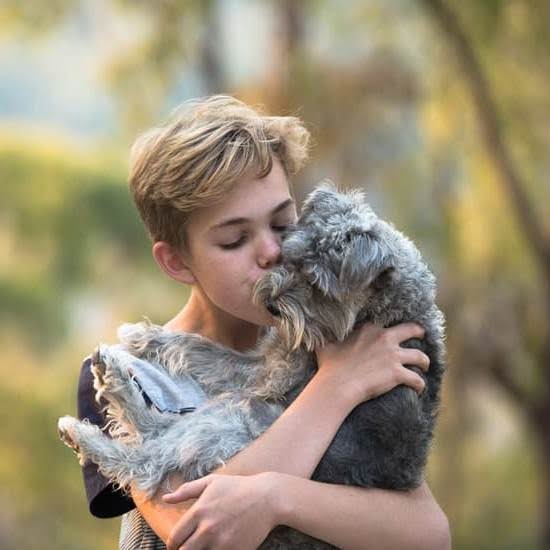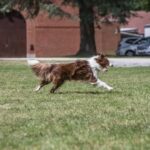Are you looking to enhance the hunting skills of your four-legged companion? Learn how to whistle train a hunting dog to improve communication, obedience, and performance in the field. Whistle training is a valuable tool that can make a significant difference in your dog’s ability to follow commands and respond effectively in various hunting scenarios.
Whistle training for hunting dogs goes beyond traditional verbal commands, providing a clear and consistent way to communicate with your canine partner over long distances and during challenging situations. By understanding the importance of whistle training, you can establish a strong foundation for building trust, enhancing safety, and maximizing the potential of your hunting dog.
In this guide, we will explore the fundamentals of whistle training for hunting dogs, from choosing the right whistle for training to implementing advanced techniques for distance control and recall. By following proven strategies and maintaining consistency in your training schedule, you can develop a stronger bond with your hunting dog and achieve success in the field.
Choosing the Right Whistle for Training
When it comes to whistle training a hunting dog, choosing the right whistle is essential for effective communication and successful training sessions. There are several factors to consider when selecting a whistle that will work best for your dog and your training goals:
- Frequency: Different whistles produce different frequencies of sound, so it’s important to choose one that is audible to your specific dog breed. Some breeds may respond better to higher frequencies, while others may prefer lower ones.
- Volume: The volume of the whistle should be loud enough to be heard over long distances and in various outdoor environments. Look for a whistle that can cut through wind, water, and other background noises.
- Durability: Since hunting dogs are often exposed to rough terrain and weather conditions, opt for a whistle that is durable and water-resistant. A sturdy plastic or metal whistle can withstand the wear and tear of outdoor training sessions.
By taking these factors into account, you can choose a whistle that will effectively help you communicate with your hunting dog during training sessions.
Training a hunting dog involves teaching them basic obedience commands like sit, stay, and come. Using a whistle in conjunction with verbal cues can enhance your dog’s understanding and response time. Here’s how you can establish these fundamental commands with a whistle:
- Sit Command: Use one short blast on the whistle followed by the verbal cue “sit.” Repeat this sequence until your dog associates the sound of the whistle with sitting down.
- Stay Command: Utilize two quick blasts on the whistle to signal the “stay” command. Reinforce this by rewarding your dog when they remain still after hearing the cue.
- Come Command: Teach your dog to come when called using a series of long, continuous blasts on the whistle paired with the verbal command “come.” Practice this command in different environments to ensure reliability.
With consistent practice and positive reinforcement, your hunting dog will quickly learn to respond to these basic commands using the designated whistles signals.
Remember that each hunting environment presents its own set of challenges for both you and your dog. It’s crucial to gradually introduce whistling techniques in various settings such as fields, woods, and water bodies so that your dog can generalize their obedience skills. Training in different locations will help reinforce their responses regardless of distractions or surroundings.
Additionally, practice implementing advanced whistle commands like directing your dog at a distance or recalling them from afar. By gradually increasing the level of difficulty in training scenarios, you can strengthen your hunting dog’s ability to follow whistled instructions no matter where they are or what they’re doing. Remember that patience, consistency, and positive reinforcement are key components in successfully mastering advanced whistle obedience with your hunting companion.
Establishing Basic Commands
To start teaching these commands, begin with Sit. Use positive reinforcement such as treats or praise to encourage your dog to sit on command. Consistency is key in this process – always use the same verbal cue alongside the whistle signal for sit.
Once your dog has mastered sitting on command, move on to teaching them how to stay in place when signaled by the whistle. This can be particularly useful when you need your hunting dog to remain stationary while you make a shot or prepare for a hunt.
The “Come” command is crucial for maintaining control over your hunting dog, especially in potentially dangerous situations. When practicing this command, always use a consistent tone when blowing the whistle and pair it with a familiar verbal cue like “come” or your dog’s name.
Begin with short distances and gradually increase the distance between you and your dog to reinforce their response to the whistle signal. With patience and practice, your hunting dog will learn to respond promptly to the come command, enhancing safety and efficiency during hunting outings.
Gradual Introduction to Whistling
When it comes to whistle training a hunting dog, one of the crucial steps is the gradual introduction to whistling to build a positive association with the sound. Dogs are highly responsive to sound cues, and with patience and consistency, they can learn to understand and obey whistle commands effectively.
To start the process of introducing your hunting dog to whistling, begin with short and simple whistle sounds that are distinct and easy for your dog to recognize. Use high-pitched or loud whistles that will cut through any background noise when you are out in the field or woods. It’s important to pair each whistle sound with a specific command such as “come” or “sit” so that your dog associates the sound with a particular action.
As your hunting dog begins to respond to the basic commands along with the whistle sounds, gradually increase the complexity of the commands and introduce new whistles for different actions. For example, you can use one long whistle for recall, two short whistles for sitting, and three quick whistles for staying in place.
Practice these commands consistently in various environments such as open fields, wooded areas, or near bodies of water to reinforce your hunting dog’s understanding of the whistle signals.
Implementing Whistle Commands in Different Environments
Training in the Field
When it comes to whistle training a hunting dog in the field, it is essential to start in a familiar and controlled environment. Begin by practicing basic commands like sit, stay, and come using the whistle. As your dog becomes more comfortable with these commands, gradually increase the distance between you and your canine companion. Make sure to use consistent tones for each command so your dog can easily distinguish them amidst the sounds of the field.
Training in the Woods
Transitioning from the open field to the woods can present new challenges for whistle training. The dense foliage and varied terrain can affect how well your commands are heard by your hunting dog. Practice whistle commands in different parts of the woods to ensure that your dog can respond effectively regardless of their surroundings. Utilize positive reinforcement techniques such as treats or praise to reinforce desired behaviors while training in this environment.
Training in the Water
For hunting dogs that will be working near bodies of water, incorporating whistle commands during water training sessions is crucial. Start by practicing basic commands near shallow water before gradually advancing to deeper areas. Ensure that your dog is comfortable with both land and water-based commands using the whistle. Implementing recall commands while training in water is particularly important for ensuring safety during hunting expeditions near bodies of water.
Advanced Whistle Training Techniques
When it comes to whistle training a hunting dog, mastering advanced techniques can elevate your dog’s performance in the field. These techniques focus on enhancing your dog’s ability to respond to whistle commands from a distance, follow directions accurately, and have a strong recall even in challenging situations. Here are some key strategies on how to implement these advanced whistle training techniques effectively:
- Distance Training: Start by practicing basic commands at a close range and gradually increase the distance between you and your dog. Use different pitch variations on the whistle to signify different commands. This will help your dog recognize and respond correctly to commands even when they are far away.
- Directional Commands: Teach your hunting dog directional cues using the whistle. For example, use short bursts of the whistle for “right” and long sustained blows for “left.” Practice these cues during retrieving exercises or when navigating through obstacles in the field. Consistent practice will help solidify your dog’s understanding of directional commands.
- Recall Training: Building a strong recall is crucial for any hunting dog, especially in emergency situations. Use a specific sequence of whistles that signals your dog to come back immediately. Start with short distances and gradually increase them while reinforcing positive behavior with rewards. Consistent recall training will ensure that your dog responds promptly regardless of the distractions present.
By incorporating these advanced whistle training techniques into your sessions, you can fine-tune your hunting dog’s responsiveness, focus, and agility in various hunting scenarios. Remember that patience, consistency, and positive reinforcement are essential components of successful whistle training. With dedication and perseverance, you can enhance your bond with your hunting companion while improving their performance in the field.
Troubleshooting Common Training Challenges
Understanding the Challenges
One of the most common challenges that hunters face when whistle training their hunting dogs is a lack of response from their canine companions. This could be due to various reasons such as confusion, distraction, or insufficient motivation. Another challenge is distractions in the environment, which can divert the dog’s attention away from following whistle commands. Understanding these challenges is crucial in finding effective solutions and ensuring successful training sessions.
Strategies to Overcome Lack of Response
To address the issue of a lack of response from your hunting dog during whistle training, it is essential to reinforce basic obedience commands first. Ensure that your dog understands and consistently follows simple commands like sit, stay, and come before moving on to whistle commands. Additionally, consider adjusting your training methods to better suit your dog’s learning style. Some dogs may respond better to positive reinforcement techniques, while others may require a firmer approach.
Managing Distractions During Training
When facing distractions during whistle training sessions with your hunting dog, it is crucial to gradually introduce the stimuli that may cause distractions in a controlled manner. Start training in a quiet and familiar environment before progressing to more challenging environments like busy parks or wooded areas.
Use high-value treats or toys to redirect your dog’s attention back to you when distractions arise. Consistent practice and patience are key in helping your hunting dog focus amidst external factors that may disrupt their training progress.
By recognizing these common challenges and implementing appropriate strategies, hunters can effectively overcome obstacles during whistle training sessions with their hunting dogs. Through consistency, patience, and positive reinforcement techniques tailored to individual dogs’ needs, building a strong bond based on mutual trust and communication becomes achievable for both owner and their loyal canine companion.
Consistency Is Key
Consistency in training is essential when it comes to whistle training a hunting dog. Establishing a regular training schedule and sticking to it can greatly improve the effectiveness of your training sessions. Dogs thrive on routine, so having consistent practice sessions will help reinforce their understanding of whistle commands and increase their response time. By setting aside dedicated time each day for training, you can help your hunting dog progress steadily in their whistle training.
One key aspect of creating a successful training schedule is to keep things varied and interesting for your dog. Mixing up the location of your training sessions, incorporating different environments such as fields, woods, and water bodies, will help your hunting dog generalize their whistle commands and respond effectively regardless of the surroundings. This variety will also keep your dog engaged and motivated during training sessions.
In addition to varying the environment, it is important to gradually increase the difficulty of the whistle commands as your hunting dog progresses. Starting with basic commands like sit, stay, and come, you can then move on to more advanced techniques such as distance commands, directional signals, and recall over time.
Consistency in challenging your dog with new commands while still reinforcing previously learned ones will help solidify their understanding of whistle training and ensure they are well-equipped for hunting scenarios.
| Training Tip | Details |
|---|---|
| Consistent Schedule | Establish a regular training schedule for your hunting dog. |
| Vary Environments | Incorporate different locations like fields, woods, and water bodies into training sessions. |
| Progress Gradually | Move from basic commands to advanced techniques as your hunting dog improves. |
Celebrating Success
When it comes to whistle training a hunting dog, celebrating success and recognizing progress are essential steps in the training process. This positive reinforcement not only motivates your dog to continue learning but also strengthens the bond between you and your canine companion. By acknowledging your dog’s achievements, you are reinforcing good behavior and encouraging them to perform well in future training sessions.
One way to celebrate success in whistle training is by using verbal praise or physical affection. When your hunting dog responds correctly to a whistle command, immediately offer enthusiastic verbal praise such as “Good job.” or “Well done.” You can also reward them with pets, scratches behind the ears, or belly rubs as a form of positive reinforcement. Dogs thrive on positive feedback from their owners, so be sure to make these moments of celebration enjoyable for your furry friend.
In addition to verbal praise and physical affection, you can also use treats as a reward for successful whistle training. Treats serve as an instant gratification for dogs and reinforce the behavior you want to encourage.
Keep a stash of small, tasty treats handy during training sessions so that you can quickly reward your hunting dog when they respond correctly to a whistle command. Remember to use high-value treats that your dog finds especially enticing to maintain their motivation and interest in the training process.
Conclusion
In conclusion, whistle training is an essential skill for any hunting dog owner looking to establish a strong bond with their canine companion. By investing time and effort in teaching your dog to respond to whistle commands, you are not only enhancing their performance in the field but also building a deeper connection based on trust and communication.
Through consistent training and positive reinforcement, you can create a harmonious partnership that will not only improve your hunting experience but also strengthen the relationship with your furry friend.
One of the key benefits of whistle training is the ability to give precise commands from a distance, allowing you to control your dog’s behavior effectively even in challenging environments such as dense woods or vast fields. This level of communication promotes teamwork between you and your hunting dog, leading to more successful hunts and creating unforgettable memories together.
Additionally, whistle training instills discipline in your dog, teaching them important skills like obedience, focus, and responsiveness that are crucial for their safety and performance in the field.
Furthermore, by celebrating small victories along the way and recognizing your dog’s progress in whistle training, you are not only reinforcing positive behavior but also strengthening the bond between you and your furry companion. The journey of whistle training is as rewarding for you as it is for your hunting dog, fostering mutual respect and understanding that goes beyond just following commands.
So, take the time to invest in whistle training for your hunting dog, and witness firsthand the transformation it brings to your relationship and hunting experiences.
Frequently Asked Questions
How Do You Whistle Train a Gundog?
Whistle training a gundog involves consistent practice and positive reinforcement. Start by associating the whistle with rewards, then teach specific commands like recall, stop, direction changes. Patience and consistency are key in this process.
What Are the Standard Gundog Whistle Commands?
Standard gundog whistle commands include single toots for recall, two toots for stop or stay put, multiple short toots for changing direction, and continuous tooting for retrieving tasks. Consistency in using these commands is important for effective communication with your dog.
Is Training a Dog With a Whistle Good?
Training a dog with a whistle can be very beneficial as it provides a clear, consistent way of communicating commands from a distance. Whistles carry farther than verbal cues and can be more distinct in noisy environments. It can also improve response times and overall obedience in your dog.

Welcome to the blog! I am a professional dog trainer and have been working with dogs for many years. In this blog, I will be discussing various topics related to dog training, including tips, tricks, and advice. I hope you find this information helpful and informative. Thanks for reading!





